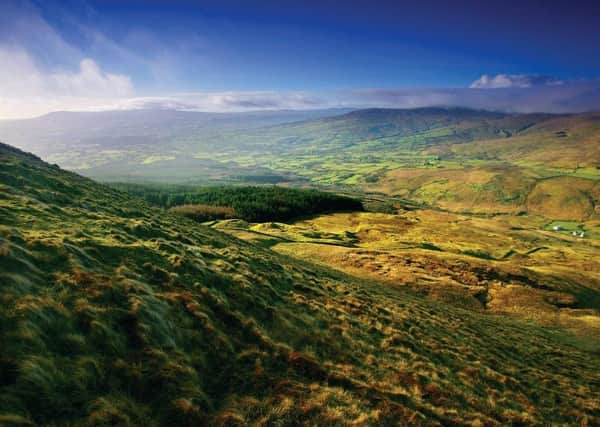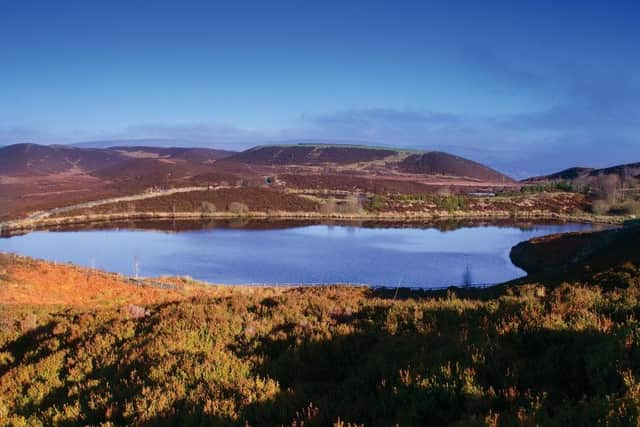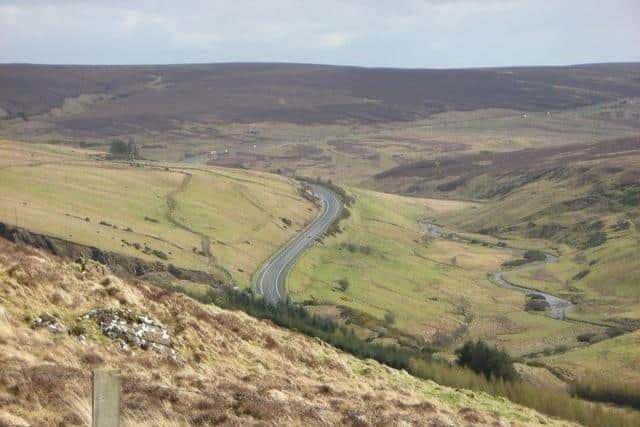BYGONE DAYS: Exciting tales of still hunting in the Sperrin Mountains


The clever captures that had been made by the police in the area recalled the still-hunting episodes which had distinguished South Derry in the early half of the 1800s, when revenue officers had been perpetually at war with “a stubborn band” of hillside brewers who had “infected every available nook in the Sperrin range”.
The chief haunts of the distillers lay in the Goats’ Glen, which, with its dreary surroundings and wild undergrowth enabled the still keepers to “carry on their shady traffic” in tolerable security. It was noted: “The place bore an evil reputation in those days.”
Advertisement
Hide AdAdvertisement
Hide AdThe revenue officer for the district and his fourteen assistants were kept constantly on alert, still-hunting expeditions were carried out without intermission, and every now and then some unlucky “poteen” manufacturer fell into their hands and was made to “answer for his sins”.


Sharp encounters were frequent occurrences; but owing to the dislike of the country people to assist the “besieging party”, in nine cases out of ten the brewers were able to take flight from the camp, destroy the manufacturing establishments, and escape with “their precious stimulant”.
The mass of population were influenced against the still-hunters for many reasons. The still-hunters were looked upon with “strong disfavour”, and informers were practically banned by the occupiers of the few villages in the lonely district.
It was noted that a regular trade in illicit spirits had been kept going, despite the rigorous methods adopted to suppress it, and “many and various were the strategems used by the still-keepers to baffle their opponents”.
Advertisement
Hide AdAdvertisement
Hide AdNumerous anecdotes of “exceedingly humourous character” were told of “this curious trade”.


The dealers of “poteen” took a particular delight in hoodwinking the revenue men with complete success. And this was the state of affairs when the supervision of the raids was transferred into the hands of the Royal Irish Constabulary, and so it had continued until about mid 1880s when “the pernicious practice” was almost stamped out of existence.
This change in attitude to “poteen” was largely due to the efforts of the priests of the various parishes in which the “mountain dew” was made.
Father Magee, the parish priest of Plumbridge, was one of the most zealous opponents of the still-keepers and he used influence “with such good effect” that, after a short period of active work, his district which had until then been “the happy hunting grounds of the evaders of the whiskey tax”, was freed entirely of illegal still-keepers and the illicit drink became extremely scarce in the district.
Advertisement
Hide AdAdvertisement
Hide AdBut then about a fortnight before Christmas 1896 the hillside brewers again showed sign of activity and once more the police were on their track “hunting up” still-houses and seizing “poteen” and those found with the “precious drink” in their possessions.
The first descent on the suspects was rewarded with success, a still-keeper who had made the acquaintance of the police when the trade was “in a more flourishing condition” had crossed the border from Tyrone and taken up residence in Glenedra near to Feeny in Co Londonderry, as it was a place “more congenial” than the district in which he was under the watchful glances of Fr Magee.
Sergeant Stookes of the RIC came upon him one morning in a public house at Drumderg near Draperstown and unlucky for him he was found to have a saggin of “poteen” in his possession. The saggin cost him a fine of £6.
Then following this about three and half miles from Draperstown and close to the Ouske Valley a number of stills had also been established, and another was in full swing a little to the right of the Ouske, sheltered by the Goat’s Glen.
Advertisement
Hide AdAdvertisement
Hide AdIn the townland of Carroughterragh an exhaustive search was made, and in a secluded hollow abutting a deep ravine, and sheltered by a dense thicket, a large still-house in full working order was unearthed.
From the appearance of the still-house it was evident that its proprietors had been recently at work, the embers of the fire having not been fully extinguished.
Within a short distance of the still-house a large vat was found filled with wash made from malt. A number of barrels containing large quantities of the same liquid were also discovered, in addition to stoves, hoops, jars, and other accessories used in the manufacture of “mountain dew”.
A house was next searched and here a vat of 300 gallons capacity, containing wash, was seized, and a bottle of “poteen” was traced to a house of a neighbour.
Advertisement
Hide AdAdvertisement
Hide AdThe next capture was at Tullybrick on March 13, 1897, when the offender was found by Sergeant Stokes with “poteen” in his possession. He was fined £10.
Two days later the party paid a visit to Sawelbeg and here a man was found with five bottles in his keeping.
It was reported: “These [prosecutions] should have the desired effect on the manufacturers of the spirits. The police have done their work exceedingly well, and Sergeant Stokes, who is in charge of Draperstown district, has displayed an ability to deal with the illicit distillers which should be a warning to the latter. It was he who took them in hand in ‘86, so that he is no novice in work of this kind. The suspected districts are being well watched, and every probable nook carefully searched.”
The report concluded: “The plan of action adopted by the distillers might be interesting to the uninitiated.”
There will be more on this subject in next week’s Bygone Days
Comment Guidelines
National World encourages reader discussion on our stories. User feedback, insights and back-and-forth exchanges add a rich layer of context to reporting. Please review our Community Guidelines before commenting.